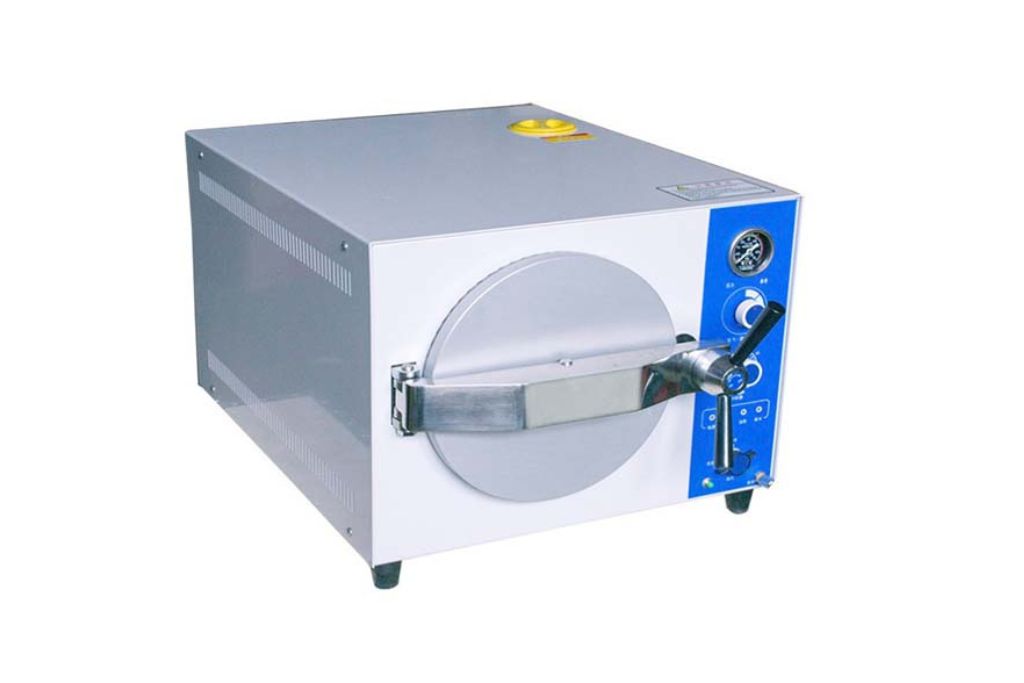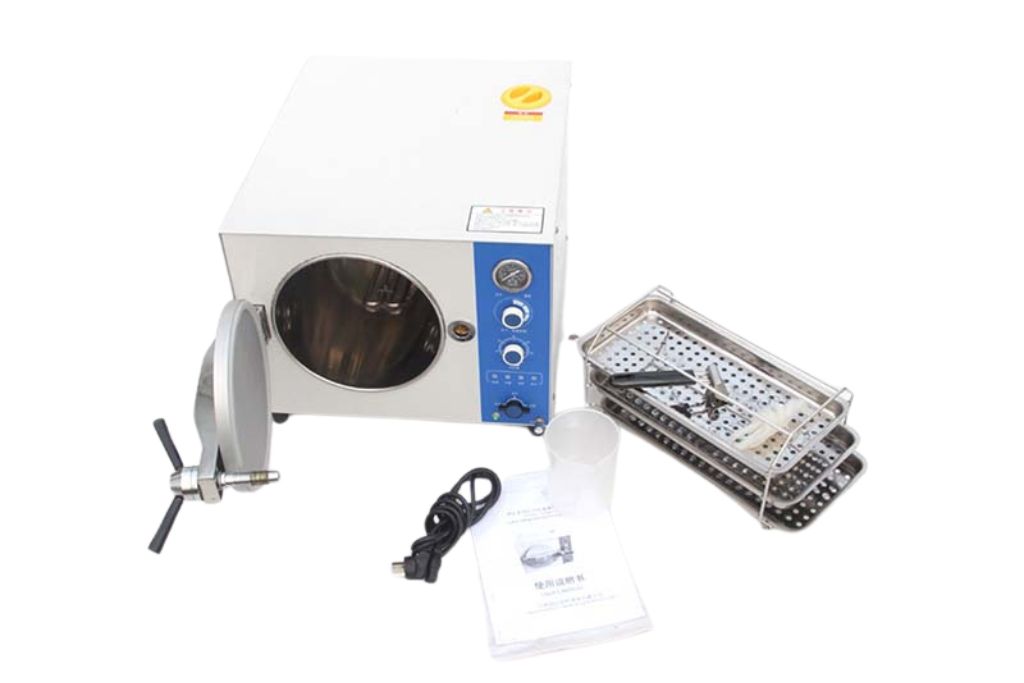Tabletop sterilizers are essential devices for ensuring the safety and cleanliness of medical instruments and other tools. These compact machines use steam to eliminate bacteria and viruses, making them crucial for clinics, dental offices, and labs. Their ease of use and maintenance appeals to professionals who require reliable sterilization on a smaller scale.
Understanding how tabletop sterilizers operate can help you appreciate their role in infection control. By utilizing specific temperature and pressure settings, these devices ensure complete sterilization of a variety of items. With different types available, you can choose one that best fits your specific needs and applications.
Exploring the benefits of tabletop sterilizers reveals why many healthcare providers trust them for effective sterilization. They not only simplify the sterilization process but also help maintain a safe environment for both patients and staff.
Key Takeaways
- Tabletop sterilizers are vital for cleanliness in medical settings.
- They operate using steam to eliminate harmful pathogens.
- Choosing the right type of sterilizer can enhance your practice’s efficiency.
Overview of Table Top Sterilizers
Table top sterilizers are compact devices designed for effective sterilization of instruments and equipment. They are widely used in various healthcare settings due to their efficiency and ease of use. Understanding their types and applications can help you choose the right model for your needs.

Types and Models
There are several types of tabletop sterilizers available, each serving different purposes. The most common models include:
- Steam Sterilizers: Use high-pressure steam to eliminate bacteria, viruses, and spores. They are often found in dental, outpatient, and rural clinics.
- Dry Heat Sterilizers: Function by circulating hot air. They are suitable for materials that can withstand high temperatures without damage.
- Chemical Sterilizers: Rely on chemical solutions to disinfect items. These are useful for heat-sensitive instruments.
Models generally vary in chamber size, with smaller units typically holding up to 2 cubic feet. Each model should meet the necessary tabletop sterilization process standards to ensure safety and effectiveness.

Applications in Various Fields
Table top sterilizers are versatile and find applications in several fields:
- Medical Clinics: They sterilize surgical instruments and tools, ensuring patient safety during procedures.
- Dental Offices: Used to sterilize tools like scalers and mirrors before each patient.
- Laboratories: Essential for decontaminating equipment used in research to prevent cross-contamination.
The benefits of tabletop sterilizers include saving space, providing rapid sterilization cycles, and improving workflow efficiency. Their compact size makes them ideal for locations with limited space, ensuring that your instruments are readily available and safe for use.
Operating Principles
Understanding how tabletop sterilizers operate is key to using them effectively. This section will cover the main sterilization methods and control systems that ensure safe and efficient sterilization.
Sterilization Methods
Tabletop sterilizers typically use steam as the primary method for sterilization. Steam sterilization works by generating high-pressure steam that penetrates materials, killing bacteria, viruses, and spores.
The tabletop sterilization process involves several phases:
- Heating Phase: Water is heated to produce steam.
- Sterilization Phase: Items are exposed to the steam at a specific temperature and time. For example, common settings include 121°C (250°F) for 15-30 minutes.
- Drying Phase: The sterilizer removes moisture to prevent contamination.
Another method includes dry heat sterilization, which uses hot air and requires longer exposure times. You should choose the method based on the items being sterilized, as different materials have different heat tolerances.

Control Systems
Control systems in tabletop sterilizers ensure that each cycle is monitored and maintained at optimal conditions. These systems may include mechanical and electronic controls.
- Mechanical Controls: Simple gauges and knobs allow you to set temperature and pressure manually.
- Electronic Controls: Advanced models feature digital displays, providing precise settings and automatic cycle monitoring.
These control systems help maintain consistency and reliability. They can also offer alerts and alarms if the cycle parameters are not met.
The benefits of tabletop sterilizers include their portability and ease of use, making them suitable for dental and outpatient clinics. By understanding these principles, you can ensure effective sterilization of your instruments.
Usage and Maintenance
Proper usage and maintenance of a tabletop sterilizer are crucial for effective sterilization of instruments. Knowing how to operate and maintain your device ensures longevity and reliability.
Operating Procedures
Before using your tabletop sterilizer, it’s important to read the manufacturer’s instructions carefully. This sets the foundation for effective sterilization.
- Prepare Instruments: Clean all instruments thoroughly to remove any debris. This may include rinsing and scrubbing, ensuring they are suitable for sterilization.
- Load the Sterilizer: Place instruments in the sterilizer chamber without overcrowding. Proper air circulation is necessary for effective steam penetration.
- Add Water: Use distilled or deionized water in the reservoir as specified by the manufacturer. Using the wrong type of water can affect sterilization quality.
- Select Cycle: Choose the appropriate sterilization cycle based on the types of instruments being sterilized. Each cycle has specific time and temperature settings.
- Initiate Cycle: Start the sterilization process and monitor for any alerts that may indicate a problem. Ensure that the sterilizer reaches required parameters to effectively kill bacteria.
Cleaning and Maintenance
Regular cleaning and maintenance are essential to keep your tabletop sterilizer functioning well. Follow these guidelines:
- Daily Cleaning: After each use, empty the water reservoir. Wipe down the interior of the sterilizer with a soft cloth to prevent build-up.
- Weekly Inspection: Check gaskets, seals, and connections for any signs of wear or damage. Replace any components as necessary.
- Deep Cleaning: Perform a deep cleaning based on the manufacturer’s recommendations. This may involve running a cleaning cycle with a specialized solution.
- Calibration: Periodically, check that the sterilizer is calibrated correctly. This ensures that it consistently reaches the necessary temperature and pressure.
- Record Keeping: Maintain logs of all maintenance activities, such as cleaning dates and any repairs made. This helps track the history and ensures the unit operates effectively.
By following these steps, you can enjoy the benefits of tabletop sterilizers, ensuring the highest standards of cleanliness and safety in your practice.
Frequently Asked Questions
This section addresses common questions regarding tabletop sterilizers. You’ll find details on their uses, differences from traditional models, selection criteria, pricing, and more.
What are the common uses of tabletop sterilizers in medical settings?
Tabletop sterilizers are widely used in outpatient clinics, dental offices, and small healthcare facilities. They are ideal for sterilizing instruments like syringes, surgical tools, and dental equipment. These devices ensure that instruments are safe and free from contaminants before use.
How do tabletop autoclaves differ from traditional autoclaves?
Tabletop autoclaves are smaller and designed for lower volume needs compared to traditional autoclaves, which are typically larger and used in hospitals. They often have faster cycle times and are easier to use in compact spaces. Both achieve sterilization, but tabletop models cater to specific, smaller-scale requirements.
What specifications should be considered when selecting a tabletop sterilizer?
When choosing a tabletop sterilizer, consider the chamber size, sterilization cycle time, and the types of loads it can handle. It’s also important to check the requirement for water quality, as a proper tabletop sterilization process ensures that only clean, distilled, or deionized water is used.
What is the general price range for tabletop autoclaves?
The price for tabletop autoclaves typically ranges from $3,000 to $10,000, depending on features, brand, and capacity. Basic models may cost less, while those with advanced technology and higher performance often have a higher price tag. It’s wise to compare different types of tabletop sterilizers to find the right fit for your budget and needs.
How does a steam sterilizer function within a dental practice?
In a dental practice, steam sterilizers use high-pressure steam to eliminate bacteria and viruses from instruments. The steam penetrates wrapped instruments, ensuring thorough sterilization. Regular monitoring with biological indicators helps confirm that the sterilization process is effective and reliable.
What size and capacity options are available for small autoclaves?
Small autoclaves come in various sizes to match different practice needs. You can find models designed for single-use instruments and those that hold multiple trays. The capacity usually ranges from 1 to 6 cubic feet, making it easy to select a unit that fits your workload.
